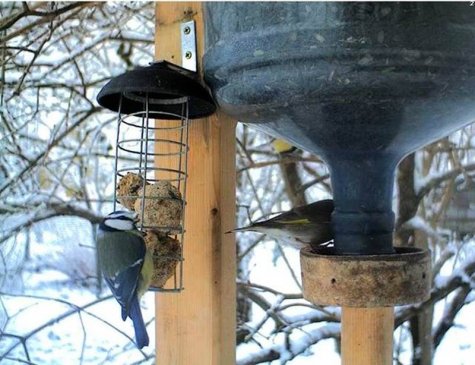Perfect time to start birdwatching
Web camera image Gavril, LK forum
Translation: Liis
Winter is truly the right time to start, there are few species of birds and you can watch at your own birdfeeder, but why not also via the winter bird webcam! Observations can be added on walks: in a winter forest or at the seashore new species can be discovered. By spring quite a number of birds will be known, and the newcomers are easier to separate from the familiar ones by shape and flight image. Good observation spots change with the seasons – we notice springtime arrivals on patches of fields where the snow has melted, at sea and lake shores as the ice melts but also at road verges.
One need not know all the birds at a birdfeeder at once. It is sensible to proceed slowly – by species, beginning for instance with tits. With largely the same principle we will start introducing the observed birds daily in Looduskalender. In addition Internet, bird guides and books and birdsong CDs help, as well as the audio book with birdsong still available at booksellers.
By early spring you will be clear about whether you want to go on with birdwatching as a hobby, and whether it offers you something? Then you will of course have to get yourself a pair of binoculars because without equipment you will not manage – you simple won’t get close to the birds. Bird-twitching is widely spread in the world, even highly popular – many times more so than here, although a great number of birds can be seen in Estonia: after all we live in an internationally important bird migration corridor.
With beautiful winter weather, in company with a friend – go out on a ramble: many eyes see more, and identifying is also more exciting, and often plain fun, letting imagination loose. To invite a more experienced enthusiast along is always good. ”Birding people” are usually very social and happy to share their experiences. You can find them at good birdwatching spots and watching towers near cities. The Ökoralli 2014 has just started, see their blog:
Birdwatching is not only being on watch with a pair of binoculars; on walks we also see nature changing and collect interesting observations, and hone our skills as nature photographers. Birdwatching novices often make a first big mistake in that they at once want to learn a great number of species, but this hobby needs patience. You have to accept that all cannot be known and learnt at once because often an interesting creature passes you in flight without leaving any time for observation, or the bird is too far off, or the light is poor. As experience grows you will know such birds already from the flight image, and you need not even search for the bird with binoculars because you will become more skilled unexpectedly quickly even for yourself in observing nature.
In web camera view during the last few days we have seen tree and house sparrows, great tits, blue tits and marsh tits, greenfinches and the nuthatch. Great spotted woodpecker and middle spotted woodpecker (Dendrocopos medius), domestic pigeons. Blackbirds, jays and hooded crows have moved on the ground. Someone more may have been overlooked.
See posts, images and video cuts in the forum: LINK









